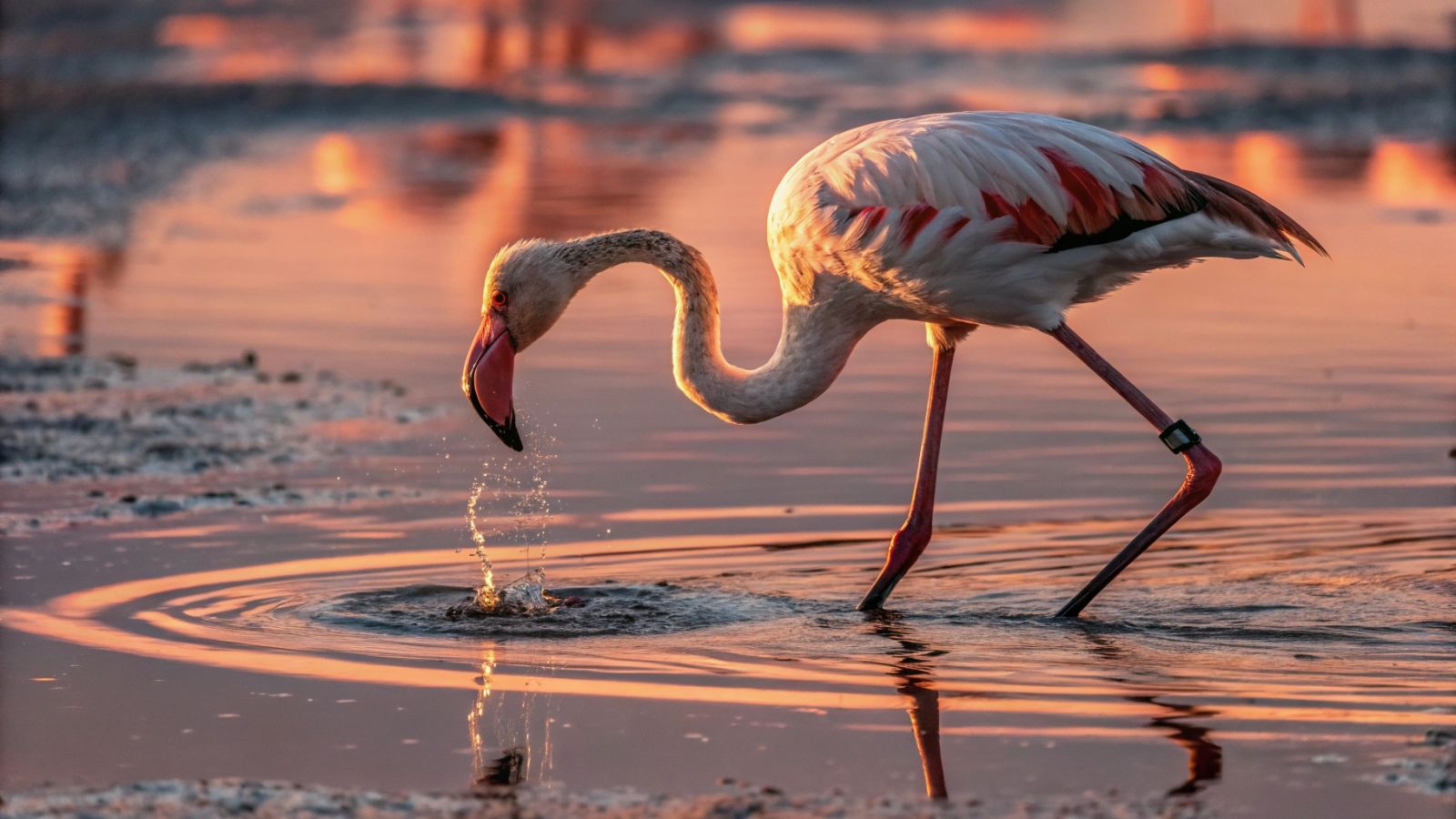What do flamingos do with their feet while eating? 🦩
Published by Cédric,
Article author: Cédric DEPOND
Source: Proceedings of the National Academy of Sciences
Other Languages: FR, DE, ES, PT
Article author: Cédric DEPOND
Source: Proceedings of the National Academy of Sciences
Other Languages: FR, DE, ES, PT
Follow us on Google News (click on ☆)
When they stir their legs and shake their heads, these birds turn the water into a hydrodynamic trap. Their hunting technique, recently decoded by scientists, reveals an astonishing mastery of physical laws. Behind their apparent grace lies a predation strategy of formidable efficiency.

A hunt under high hydrodynamic tension
Flamingos combine two distinct techniques to optimize their hunting. The first relies on their webbed feet, which they stir to create horizontal vortices. These movements stir up sediments and concentrate prey, while the flexibility of their legs amplifies the effect, as confirmed by comparative 3D models.
Their L-shaped beak is the second key tool. By snapping it up to twelve times per second, they generate vertical vortices that suck prey toward their mouths. This mechanism increases their capture rate sevenfold, turning their beak into a natural hydraulic pump. The study reveals that this technique is particularly effective against mobile prey like brine shrimp.
Finally, flamingos adapt their approach depending on conditions. They alternate between vigorous trampling in muddy bottoms and precise head movements in deeper water. This behavioral flexibility, combined with their specialized morphology, makes them formidable predators despite the constraints of their environment.
From lagoon to lab: promising applications
The observed mechanisms are already inspiring technological innovations. 3D-printed beaks replicate natural hydrodynamic properties. These prototypes could be used to filter microplastics or toxic algae.
The design of their legs also offers insights for robotics. Their flexibility prevents sinking in loose substrates. Applications are being considered for robots exploring muddy or sandy environments.
Lastly, another unique feature of flamingos—the combined filtration system (beak-tongue)—interests engineers. Its efficiency in brackish water could be adapted for desalination plants. Flamingos are thus becoming models for solving environmental challenges.